Diego Cortizas and his “Chula” destiny with Vietnam
Thanh Ha -
(VOVWORLD) - Diego Cortizas, the founder of a fashion house called Chula, is a Spanish architect-turned-designer and has been living in Vietnam for 17 years. Diego is obsessed with Ao Dai (Vietnamese traditional dress), fabrics and brocade weaving from Vietnamese ethnic minorities; and is helping disabled people generate a stable occupation.
Located on a lakeside street looking out to the West Lake, Chula fashion house welcomes customers with colorful corners designed by Diego himself. Yllen Pires from Brazil is a regular customer. "Looking from outside, you don’t realize how big it is," she said, "Then once you step in, it’s so colorful and full of life. You go pass people working and different ambiances. The environment is very lively. It leaves a very nice impression."
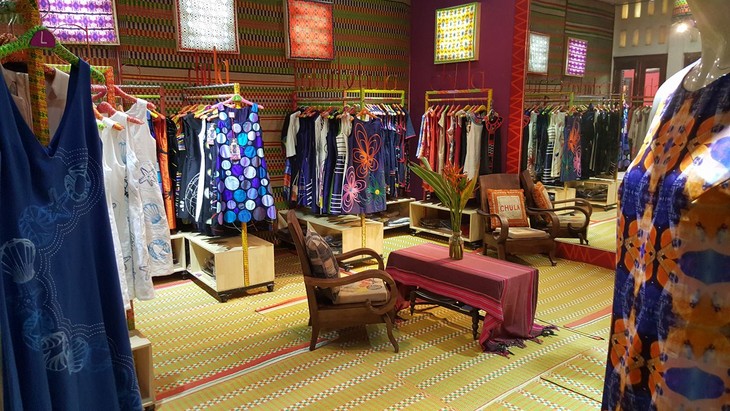 A corner of Chula fashion house. (Photo: Chula fashion house) A corner of Chula fashion house. (Photo: Chula fashion house) |
The highlights of the fashion house are Ao Dai and dresses with brocade weaving details. Diego has had over 13 years of experience designing Ao Dai, and it all started from his deep impression of the dress when he first came to Vietnam in 2004. He shared: "I remember when I was in Hoi An, I saw the students wearing white Ao Dai and riding bicycles and was very impressed. I think Ao Dai is a very modern outfit but also has a traditional flavor ."
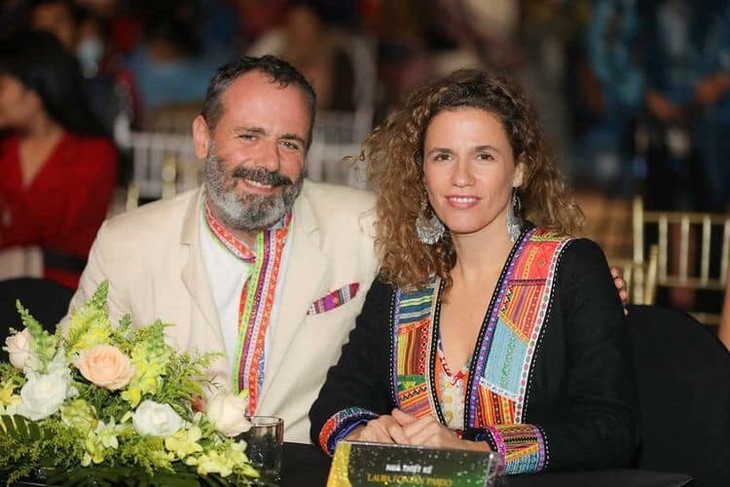 Diego and his wife Laura. (Photo: Diego Cortizas) Diego and his wife Laura. (Photo: Diego Cortizas) |
After founding Chula in 2005, Diego started working on his first design of Ao Dai, as he reckoned it is the dream of every designer in Vietnam to make the traditional dress. The first Chula’s Ao Dai was introduced in 2008, and soon after, foreign customers who were living in Vietnam turned to Chula asking for more. That was when Diego came up with the idea of using fabrics and patterns from ethnic minorities in Vietnam in the traditional dress. He said: "Ao Dai is considered as the national costume, while ethnic minorities have their own textiles. A combination of both could be a good example to show the diversity of Vietnam as a country."
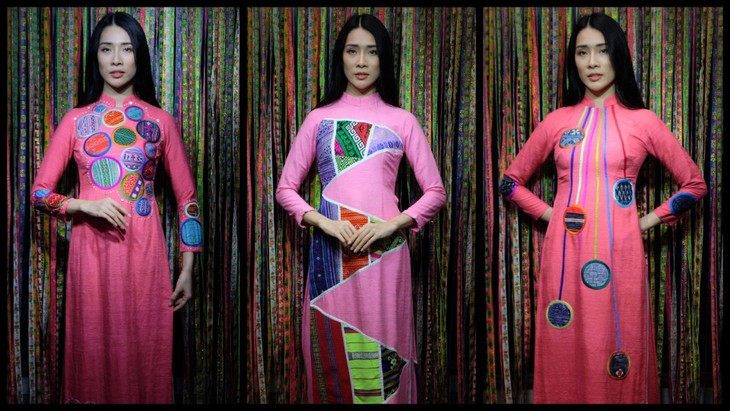 Chula's Ao Dai with brocade weaving details. (Photo: Chula fashion house) Chula's Ao Dai with brocade weaving details. (Photo: Chula fashion house) |
A typical Chula’s Ao Dai maintains its traditional shape that includes a long tunic worn over trousers, as Diego believes it’s the shape that connects all generations of Ao Dai together. From that fundamental shape, the Spanish designer creatively plays with materials such as silk, linen, velvet, and different decoration patterns to make unique designs that can only be found in Chula.
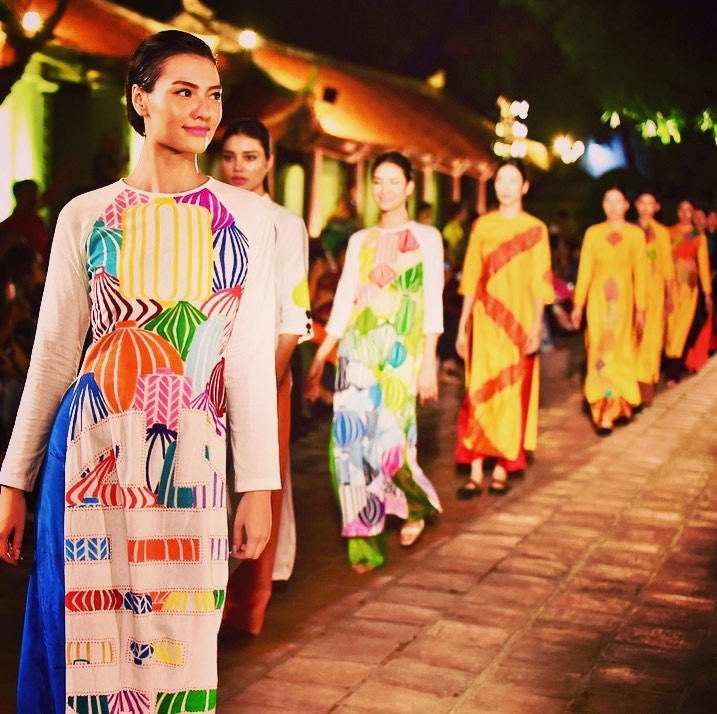 Ao Dai from Chula's Hoi An collection. (Photo: Chula fashion house) Ao Dai from Chula's Hoi An collection. (Photo: Chula fashion house) |
To date, Diego has made around 400 designs of Ao Dai in different collections. There is a Hoi An collection, in which colorful lanterns are the main decorations of the dresses; and an Ethnic collection that uses handmade brocade weaving and linen textiles from ethnic minorities in the Central Highlands of Vietnam. There are also some collections celebrating Vietnam’s diplomatic relationships with Italy, Spain, and the USA. The cultural features of those countries are reflected on the Ao Dai. "Chula’s philosophy is keeping the tradition of Vietnamese Ao Dai, but shows that it can be an international outfit as well. It can be the best ambassador of Vietnam," said Diego.
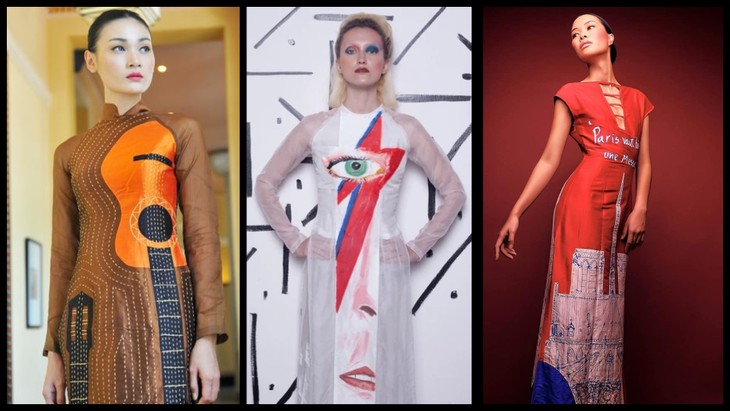 Chula's Ao Dai with cultural figures from Spain, the US, and France. (Photo: Chula fashion house) Chula's Ao Dai with cultural figures from Spain, the US, and France. (Photo: Chula fashion house) |
To create a wide variety of choices for customers, Diego also makes other collections of modern dresses using Vietnamese fabrics and decoration figures. He also takes advantage of his architecture background and comes up with new patterns every day based on daily life images, such as dried banana leaves, sculptures on a temple’s wall, bamboo baskets, vegetables, etc. Then he turns those patterns into dresses, face masks and lanterns for practical use. "It has become my routine to look for attractions in every city I visit," he said, "Hanoi is very photogenic. There are so many things that you see every day in the streets that have some kind of road beauty. It’s very special how the combination of the color and geometry is. In some ways, I realized that I can use these images to create patterns. It’ll be very nice if you can wear the colors of the city that you’re living in.”
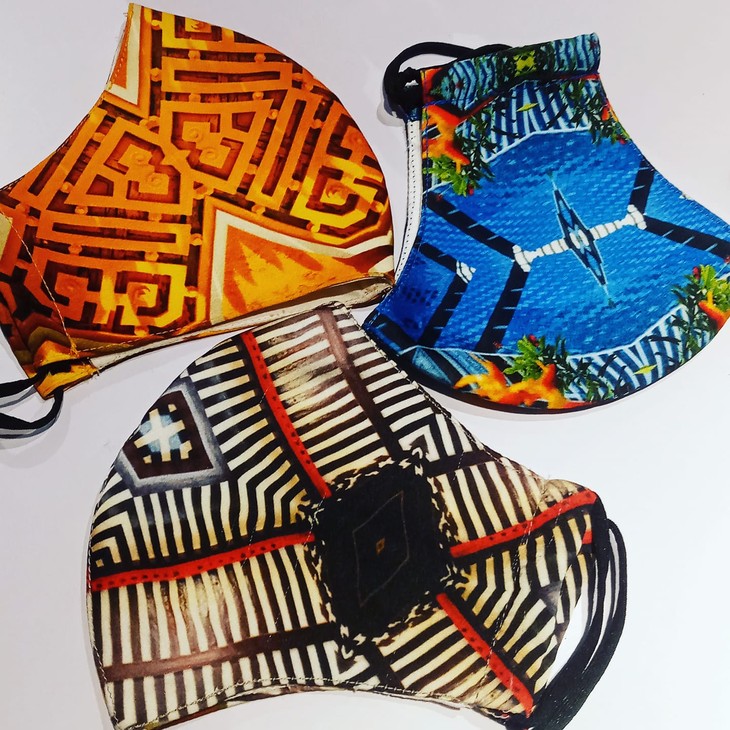 Daily life patterns in Chula's face masks. (Photo: Chula fashion house) Daily life patterns in Chula's face masks. (Photo: Chula fashion house) |
Foreign customers come to Chula not only to buy clothes but also to learn more about Vietnam. Patrice from Brazil just came to Vietnam last November. She said: "For each piece of clothes that we buy, there is a history behind that. It’s a very good travel into Vietnamese culture and people. I’m very happy about that."
Lalita Giang, a H’mong girl from Sapa who was adopted to a Spanish family, adores Chula dresses with brocade weaving details. "I’m very proud to see my ethnic minority’s cultural features on such modern and contemporary designs at Chula," she said, "I bought a dress from here and always wear it on my friends’ birthday parties and weddings to somehow promote my birth country’s images and traditions. I really like it."
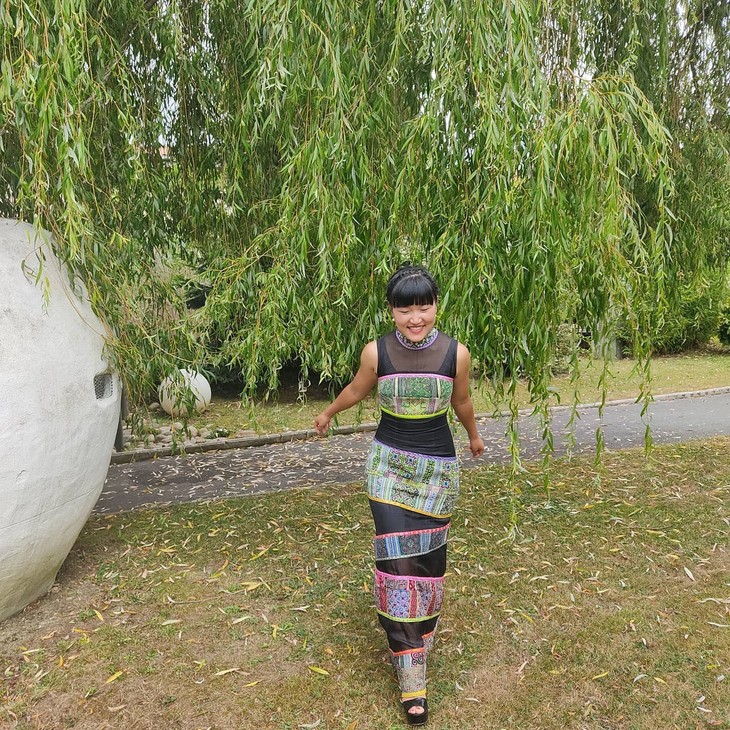 Lalita Giang wears Chula's dress. (Photo: Lalita Giang) Lalita Giang wears Chula's dress. (Photo: Lalita Giang) |
Helping Diego create those unique fashion items are a Vietnamese staff that have been accompanying him since the beginning. 75% of them are disabled people, mostly deaf and mute. Diego decided to hire them after an encounter with a deaf and mute woman 14 years ago, who introduced him to sign language. He found something in common with them regarding the fashion industry, which is all about visibility. "I think even the most intelligent person has some disabilities," he said, "Some people may be very good at Math but bad at English, or some are good at social studies but bad at finance. We think people with physical disabilities are similar. They might not be able to hear or speak but are extraordinary at other things, such as colors, compositions, handwork. And they teach us lessons about overcoming difficulties.”
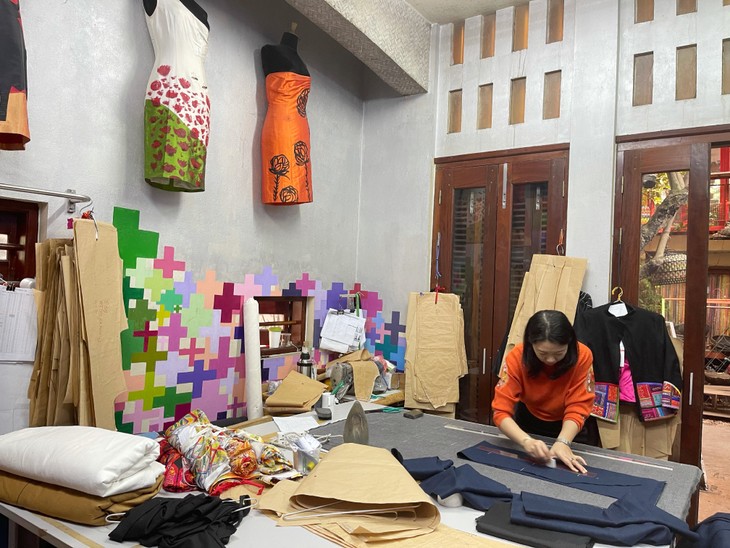 Most of Chula's staff are disabled people. (Photo: VOV) Most of Chula's staff are disabled people. (Photo: VOV) |
The first staff with hearing impairment started to work at Chula in 2006, and now everyone in the company is fluent at sign language. Bui Thi Quynh Anh is the staff manager, who has been working at Chula for 12 years. She explains Diego’s methods with his staff: "Diego has created an equitable working environment where everyone gets paid for their productivity. A majority of the staff here cannot hear or speak, but they are blessed with good taste. Their choices of colors and sewing techniques really fit Diego’s. And Diego assigns our jobs based on our strengths, so that we can make the most of our ability. I think that’s what keeps us working together for a very long time."
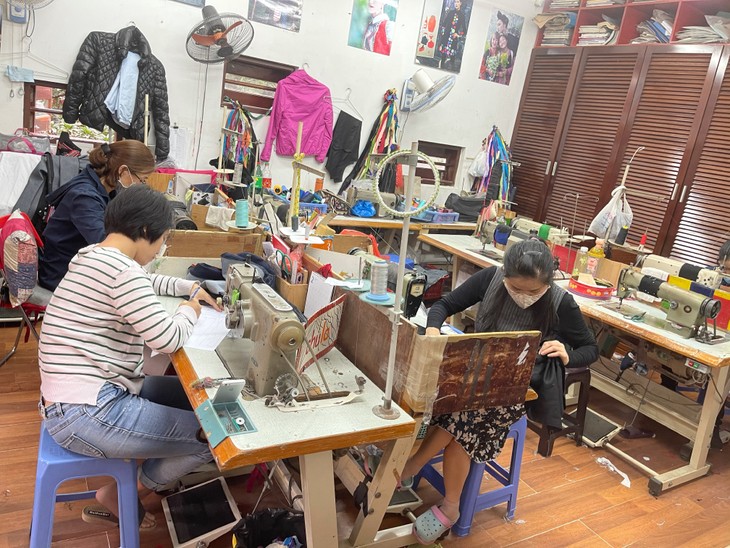 A busy corner of Chula's workshop. (Photo: VOV) A busy corner of Chula's workshop. (Photo: VOV) |
After the training sessions, all the staff at Chula are now involved in the process of turning Diego’s designs into complete products; such as cutting, sewing, and embroidery. Diego is planning on training more disabled people on creative tasks instead of handiwork. He also builds friendly relationships with his staff so that he can understand them better. Quynh Anh shared: "Chula feels like a family to me. I consider Diego and his wife Laura as my brother and sister. We often share personal stories with each other, and I think that’s how Diego learns about our abilities and passions, and from there assign us to suitable tasks that we can develop with and stick to for a long time."
Diego is planning on an Ao Dai festival in Hanoi, in collaboration with a Spanish painter, when the COVID-19 pandemic is contained. Last November, he received the Spanish King's Order of Civil Merit for his contribution to promoting Spain cultures to Vietnamese people. Diego and his wife built a family with three children in Vietnam, and consider their fate with Vietnam very special, just like the meaning of ‘Chula’.
Thanh Ha